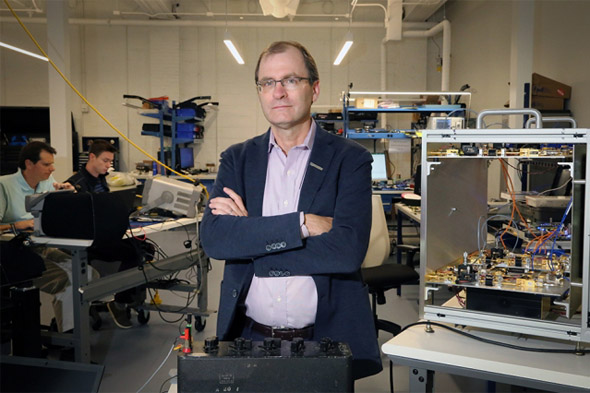An interdisciplinary approach to accelerating human-machine collaboration
Professor’s startup brings millimeter-scale location tracking to factories, ports, and other industrial environments.

“One of the holy grails is to have humans and robots share the same space and collaborate, and we’re enabling mobile robots to work in human environments safely and on a large scale.”
— David Mindell, Professor of the History of Engineering and Manufacturing and professor of aeronautics and astronautics
David Mindell has spent his career defying traditional distinctions between disciplines. His work has explored the ways humans interact with machines, drive innovation, and maintain societal well-being as technology transforms our economy.
And, Mindell says, he couldn’t have done it anywhere but MIT. He joined MIT’s faculty 23 years ago after completing his PhD in the Program in Science, Technology, and Society, and he currently holds a dual appointment in engineering and humanities as the Frances and David Dibner Professor of the History of Engineering and Manufacturing in the School of Humanities, Arts, and Social Sciences and professor of aeronautics and astronautics.
Mindell’s experience combining fields of study has shaped his ideas about the relationship between humans and machines. Those ideas are what led him to found Humatics — a startup named from the merger of “human” and “robotics.”
More SHASS stories about Innovation
Suggested links
MIT Program in Science, Technology, and Society